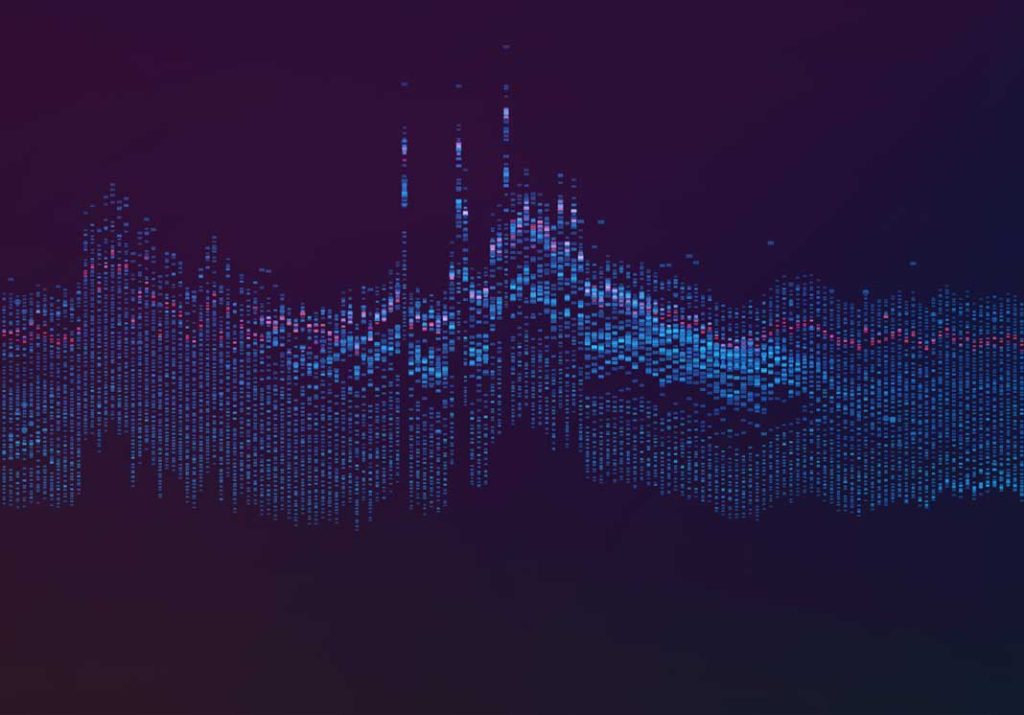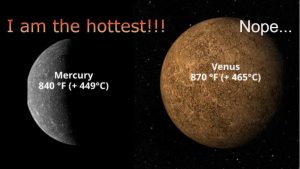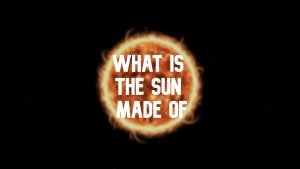Conversation with the Universe: Сan we hear the sounds of space and what do they tell us?
20th Dec 2022
Sounds from space? Nonsense, any person who knows some physics will tell you. After all, space is a vacuum, and sound waves cannot propagate in a vacuum. This is true, but it does not mean that space is silent. In this article, you will learn how we can hear the sounds of space, discover some planet’s sounds, and what they tell us.
Сan you hear sounds in space?
Fans of the cult space horror series Alien by Ridley Scott will surely remember the slogan of the first film: “In space no one can hear you scream.” To test whether this is true, the Brunel University London team launched a high-altitude balloon with a speaker to the edge of space. In the video, you can hear how the sound intensity decreases as the balloon climbs.
Why is this happening?
Sound is the mechanical vibrations of the gaseous, liquid or solid molecules (on Earth, it is air, water and any solid bodies — stones, metals, etc.). Oscillations form waves of different frequencies, but the human ear can only perceive those in the range of 16 Hz – 20 kHz. The sounds below (infrasound) and above (ultrasound) are beyond our physical perception.
There are gas clouds in space that can act as media, but the farther they extend from planets and other cosmic bodies, the more rarefied they become, which makes the occurrence of mechanical vibrations in such low-molecule clouds almost impossible. Simply put, there are no sounds in space that we can hear. So, the Alien slogan doesn’t lie. In space, no one can hear you scream, whereas the whistle of laser guns and the roar of combat aircraft explosions in all space action movies are only special effects to impress the viewer.
But space cannot be absolutely silent, you may say, and you will be right. The universe is constantly communicating with us — but through other signals that scientists have learned to convert into sound.
How did NASA get sounds from space?
Sound can not travel through outer space, but electromagnetic waves, such as ultraviolet, infrared and gamma radiation waves, as well as radio waves, can. These waves are recorded by special instruments installed on spacecraft that can convert them into sound. This method is called sonification. But how does it work?

Any sound wave has three variables — frequency (tonality, pitch), amplitude (loudness), and rhythm. To convert electromagnetic and radio waves into sound waves, they are matched with these variables in certain proportions. The first stage of processing usually eliminates spacecraft engine sound and other unwanted noise. The pure sound waves are then filtered out and interpolated to cover the silent areas. The received data is scaled to the range of audible frequencies.
NASA and other space agencies have probes that make similar measurements and transformations. Thanks to this, we can hear sounds in space, for example, the sounds of the planets, the Sun, and even a black hole’s scary noise! Let’s find out how this data was obtained and what it sounds like.
What does space sound like?
Over the years of space exploration, dozens of sounds from space have gone through the process of sonification. It is now established that all objects in the solar system sound differently. Mostly, those are quiet, fantastic fusion sounds, similar to layout effects from the music of Vangelis or Jean Michel Jarre. NASA has put together a playlist of the Sun and planet noises, which you can listen to on Soundcloud. And we will discuss the most interesting space sounds in more detail.
Chirping Comet
In 2014, the Philae lander from the ESA and NASA Rosetta probe landed on the surface of comet 67P (Churyumov-Gerasimenko) and, using the Rosetta Plasma Consortium (RPC) instrument, recorded the oscillations of electromagnetic waves in the comet’s magnetic field. These space sounds have a 40–50 MHz frequency, so to make the radiation audible, the researchers transposed this data into sound using a magnetometer, increasing its frequency by 10 thousand times. The result is strange chirps and clicks.
Later, astrophysicists managed to explain why the comet makes such a sound: it’s all about the stream of charged particles (plasma) that bombard the comet and cause unusual vibrations when passing through its magnetic field.
Humming Sun
In 2018, one of the instruments aboard the SOHO space solar observatory, the Michelson Doppler Imager (MDI), recorded fluctuations and vibrations in the Sun’s atmosphere for 40 days, which scientists then converted into sound. The main way to measure solar oscillations is to fix the Doppler shift of spectral lines. For the vibrations to reach the frequency range accessible to the human ear, scientists at Stanford University filtered the data by frequency and accelerated it by 42,000 times. The result is a low-frequency quiet rumble, reminding one of a heating element sound.
Roaring Jupiter
In 2016, NASA’s Jupiter-studying satellite, Juno, recorded “roaring” sounds from the solar wind colliding with the planet’s magnetosphere. For this, the Waves system, which tunes to the electromagnetic waves of Jupiter, was used. Ionised particles are sent into the magnetosphere at a speed of several million kilometres per hour and then abruptly slow down, making frightening sounds.
Later in 2021, during the next flyby of Jupiter’s moon Ganymede, Juno made another recording, approaching the closest distance to the satellite — 1,038 km. Scientists became particularly interested in the frequency increase that can be heard in the middle of the recording. They attribute this to the transition of Juno from one region of the magnetosphere to another, namely from the night side of the satellite to the day side. The sounds of Ganymede reminded us of the funny “chatter” of the R2D2 robot from Star Wars. Don’t you think so?
Hoarse Saturn
In 2017, the Cassini mission, using the Radio and Plasma Wave Science instrument (RPWS), recorded the “sounds” of plasma waves emitted by Saturn’s rings. They are electromagnetic whistles, which can be perceived as white noise, and occur when the charged particles that make up the plasma begin to perform complex oscillatory movements under the influence of electric and magnetic fields. On the recording, you can hear how the radiation emanating from Saturn is distinguished by a large number of high and low tones, as well as a frequent change in sound frequency.
Silent Mars
In late 2021, NASA released seven audio recordings of the data received by the Mars rover Perseverance. One can hear how the rover rides on the surface of the red planet and how the Martian wind blows. The researchers note that on Mars, the lower spectrum frequencies of the sound range are well distributed — quite unlike on Earth.
Windy Venus
In 2021, the joint ESA and JAXA mission BepiColombo recorded the solar wind blowing on Venus. The recording was made at a 550 km distance from the planet. As a result, two versions of the sound were obtained. The first sound was recorded with an Italian spring accelerometer (ISA). The device recorded accelerations measured by the spacecraft, which were then translated into an audible frequency. The ESA said the accelerometer was also affected by spacecraft tides craft as it flew past Venus at varying distances. Another sound, captured by the probe’s magnetometer, picked up low-frequency wind-like noises caused by the interaction of the solar wind with Venus’s atmosphere.
Why do scientists collect the sounds of space?
Of course, NASA, ESA and other space agencies do not record sounds from space to enjoy them on relaxing evenings. You might be surprised, but sound is one of the main tools for studying space. Studies of the Sun’s structure, planets and asteroids, the discovery of water on the moon — all this was done with the help of sound. Sound has no competition in studying electrically conductive media: plasma, oceans, and the internal structure of planets, where electromagnetic waves do not penetrate.
In other words, without sound, our understanding of space and other worlds’ structures would be less informative. Of course, this is just one interpretation, but who knows, maybe someday we will really know what alien civilisations sound like… And, hopefully, we will not want to scream once we hear that.






Thank you for your comment! It will be visible on the site after moderation.